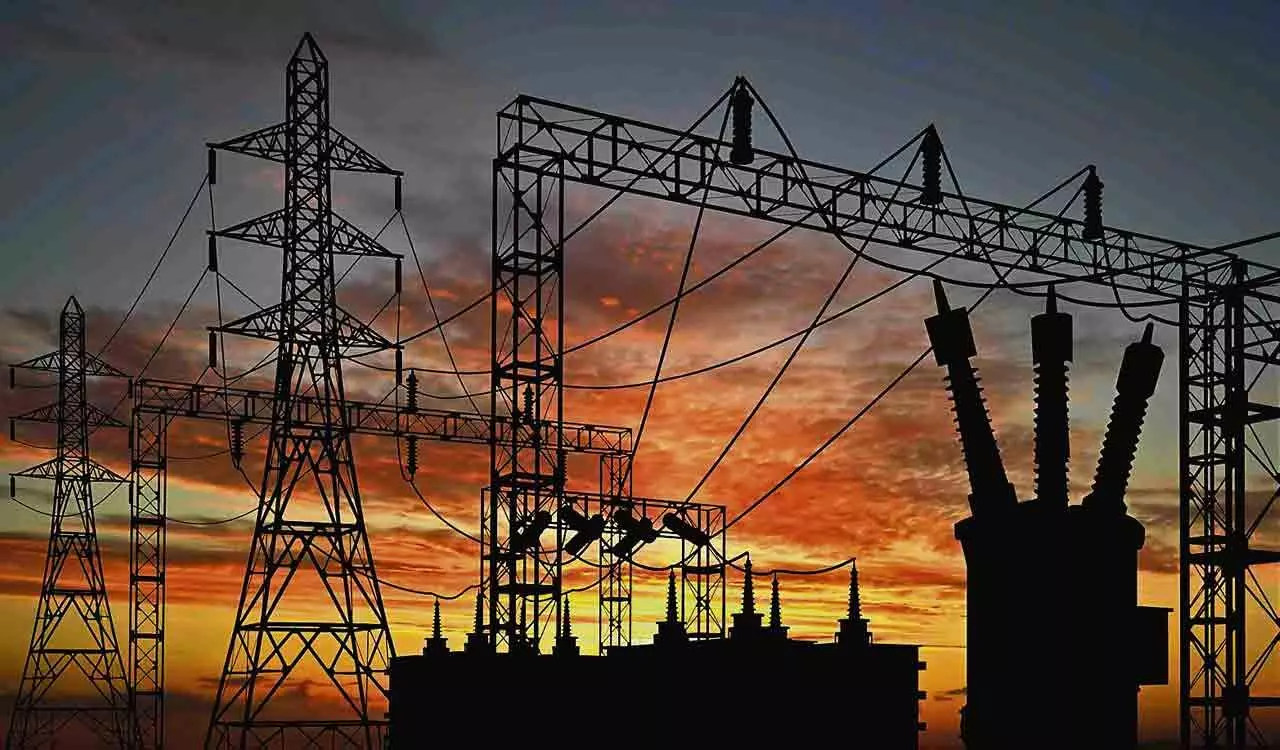Telangana’s peak power demand touches all-time high at 15,752 MW on Feb 6
Given these trends, distribution companies have taken steps to meet the power demand exceeding 17,000 MW for the upcoming peak in the summer season
By Sistla Dakshina Murthy
Representational Image
Hyderabad: Telangana State recorded its highest-ever peak power demand of 15,752 MW on Thursday, surpassing its previous record of 15,623 MW on March 8, 2024.
“There has been a significant increase in demand compared to previous years. For instance, in December last and in January this year, the growth in peak demand has been 13.49 per cent and 10.10 per cent respectively, when compared to the same months a year earlier,” said the Transmission Corporation of Telangana Ltd (TRANSCO) chairman and managing director D Krishna Bhaskar making the data public on Thursday.
Krishna Bhaskar said, in the last 14 months, all measures have been taken by the Government to ensure a sustained and reliable supply of quality power to all categories of consumers for agriculture, industry and domestic needs.
These are significant increases that, to be serviced, require careful planning of both the purchase of power and its supply.
Given these trends, distribution companies have taken steps to meet the power demand exceeding 17,000 MW for the upcoming peak in the summer season. To meet this demand, the distribution companies (SPDCL and NPDCL) have planned to procure the power from existing long-term contracts as well as from the power exchanges.
Elaborating, the TRANSCO CMD said the rates for power units purchased from all long-term agreements are decided by the regulatory commission. Any shortage is met through purchases from the power exchange, the working of which is as per the regulations of the Central Electricity Regulatory Commission.
The distribution companies purchase power from the exchanges to meet the short-term deficit and to reduce the cost through power purchase optimisation. Power purchase is required because the base availability of power in the State (through long-term contractual agreements) is 9,134 MW, requiring the State to plan for market purchases during non-solar hours—in fact, also during solar hours when the total solar power augmentation does not fill in the total gap with peak demand.
The concept of power purchase optimisation is explained below:
Whenever the rates in the exchange are less than the variable cost of thermal power plants, it makes economic sense to purchase power from the market and back down the (at that moment) more expensive thermal power stations.
For example, in the recent months of December and January, the distribution companies have purchased power at an average rate of Rs 2.69 and Rs 2.82 per unit, backing down the thermal stations, the average rates for which were Rs 3.97 per unit and Rs 4.18 per unit, the TRANSCO CMD said.
Power companies saved Rs 982.66 crores from timely purchases
The savings that accrued to the distribution companies through their judicious choice of procuring from the exchanges in particular time periods (when the exchange rates were low) resulted in savings amount of Rs 196.68 crores in December and Rs.185.27 crores in January.
An example of power purchase cost optimisation on two days is shown below:
“In fact, from December 2023 to January 2025, the total savings that accrued to the distribution companies because of this optimisation is Rs 982.66 crores that is, nearly a thousand crores. Had this amount not been saved, it would have led to an additional burden upon the consumers of the State. In fact, this efficient usage of the exchange markets to optimise power purchase spending was recognised by the Government of India, which adjudged Telangana SLDC as the best in the country for large States. The award was presented on December 14 in IIT Indore,” said Krishna Bhaskar.